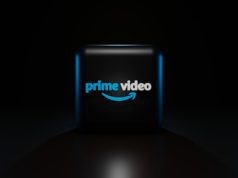 New research from Chadwick Martin Bailey found that half of appropriately capable smartphone owners had scanned a QR code, and a fifth of those had gone on to make a purchase. Those are glass-half-full numbers for fans of the scannable squares, but the report nonetheless provides information about how the codes are faring in the real world.
New research from Chadwick Martin Bailey found that half of appropriately capable smartphone owners had scanned a QR code, and a fifth of those had gone on to make a purchase. Those are glass-half-full numbers for fans of the scannable squares, but the report nonetheless provides information about how the codes are faring in the real world.
The Consumer Pulse study was conducted by CMB and and iModerate Research Technologies in order to learn how people are using QR (Quick Response) codes and why they’re using them, with an eye toward how to improve their popularity.
Marketing teams should note that although only 21 percent of respondents knew what the term QR code meant, 81 percent of them had seen them. That shows it’s still necessary to explain rather than assume consumers are familiar with the technology.
According to the report, half of smartphone owners had scanned a QR code, and nearly 20 percent of them made a purchase after scanning. Of course, not all QR codes are related to a purchase, since they’re used to convey information of all kinds.
Importantly, the report found that those offering the codes have some work to do: under half (41 percent) of respondents rated the information they got from scanning the code to be useful. But at least 70 percent of people found QR codes were easy to use.
“Consumers are curious about QR codes and the information they can get,” said Jeff McKenna, senior consultant at Chadwick Martin Bailey. “But companies need to understand what consumers expect from a scan whether it’s more information, a coupon, or exclusive offer. Companies who use QR codes successfully to drive engagement or sales will be those who meet customer expectations and offer compelling reasons to scan.”
Related links:
http://blog.cmbinfo.com/qr-codes
Photo by Flickr user CleverCupcakes, used under Creative Commons license








QR code research is darn interesting. That’s why I’ve actually conducted a test of my own on 30.000 visitors of a soccer event.
The goal was to see the importance of context when presenting people with a QR code while the second goal was to promote a new application of mine.
Although interesting, the results were depressing in the sense of the amount of traffic I got from the QR code.
Details and pictures of my research are on my blog http://www.mennobieringa.nl/research/researched-the-importance-of-qr-codes-and-their-context/
I hope this extra info serves someone.
Cheers!